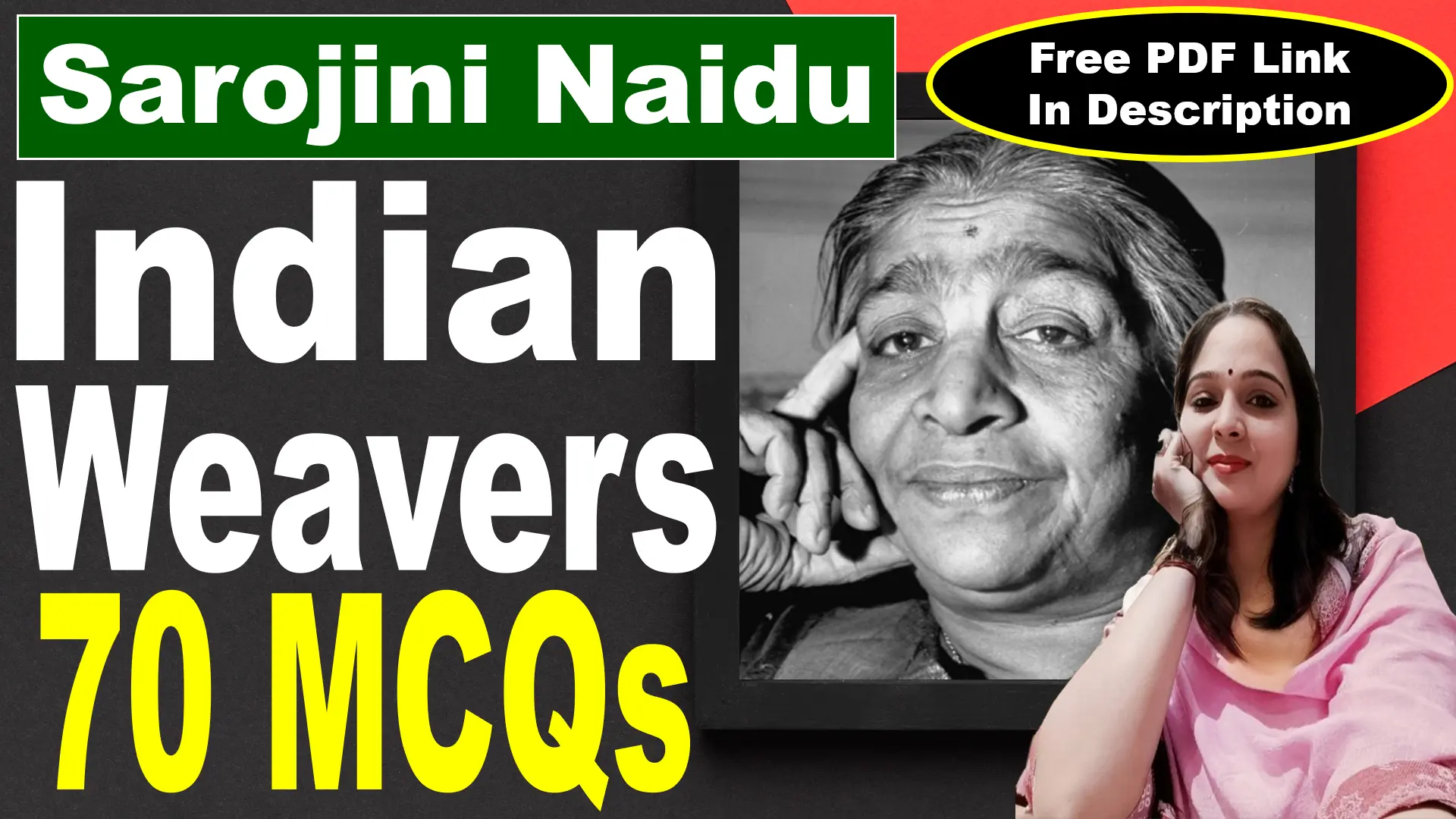
41. Who is the first suitor to attempt the casket challenge?
a) Bassanio
b) The Prince of Morocco
c) The Prince of Arragon
d) Lorenzo
Answer: b) The Prince of Morocco
Explanation: The Prince of Morocco is the first suitor to attempt the challenge of selecting the correct casket to win Portia’s hand in marriage. He confidently chooses the gold casket, believing that Portia, being a prize many men desire, must be contained within the most valuable-looking box. However, he fails the test, as the gold casket contains only a skull and a scroll warning against choosing based on outward appearances. His failure highlights the play’s theme that wealth and beauty do not always represent true worth.
42. What inscription is written on the gold casket?
a) “Who chooseth me shall get as much as he deserves.”
b) “Who chooseth me must give and hazard all he hath.”
c) “Who chooseth me shall gain what many men desire.”
d) “Who chooseth me will win Portia’s love.”
Answer: c) “Who chooseth me shall gain what many men desire.”
Explanation: The gold casket’s inscription reflects human greed and superficial desires. Many men desire wealth, status, and beauty, but these do not necessarily lead to true happiness. The Prince of Morocco assumes that external riches determine Portia’s worth, but the casket’s contents prove otherwise. The lesson conveyed is that true love and virtue cannot be judged by material wealth, reinforcing the play’s theme that inner qualities matter more than external appearances.
43. What does Shylock’s famous speech “Hath not a Jew eyes?” argue?
a) That Jews are different from Christians
b) That all humans are equal
c) That Christians are superior
d) That Antonio deserves his punishment
Answer: b) That all humans are equal
Explanation: In this powerful speech, Shylock argues against the discrimination he faces as a Jew in Venetian society. He points out that Jews and Christians share the same physical and emotional experiences—both feel pain, hunger, and joy. By emphasizing their common humanity, he challenges the audience’s prejudices. The speech serves as a rare moment in the play where Shylock expresses his grievances, making him a more sympathetic character despite his later insistence on revenge.
44. What happens to Shylock’s daughter, Jessica, in the play?
a) She is forced to marry a Jewish man
b) She is disowned by Shylock
c) She becomes a nun
d) She remains loyal to her father
Answer: b) She is disowned by Shylock
Explanation: Jessica elopes with Lorenzo, a Christian, and steals a large amount of her father’s wealth. This act is seen as a complete rejection of her Jewish heritage. Shylock is devastated by her betrayal, especially since she also exchanges her late mother’s ring for a monkey, showing disregard for her family ties. After this event, Shylock becomes even more bitter, intensifying his desire for revenge against Antonio. Jessica’s elopement highlights the play’s themes of religious conflict and personal identity.
45. What does the silver casket contain?
a) A picture of Portia
b) A skull
c) A fool’s head
d) A scroll with a poem
Answer: d) A scroll with a poem
Explanation: The silver casket bears the inscription: “Who chooseth me shall get as much as he deserves.” The Prince of Arragon, believing himself to be deserving of Portia, selects this casket. However, inside, he finds a fool’s head along with a poem mocking his arrogance. This moment reinforces the idea that self-importance and entitlement are not reliable measures of worth. True love, as the play suggests, is found through humility and genuine virtue rather than status and vanity.
46. Who provides financial assistance to Bassanio?
a) Shylock
b) Antonio
c) Lorenzo
d) Gratiano
Answer: b) Antonio
Explanation: Antonio, Bassanio’s closest friend, provides financial help by borrowing money from Shylock, using himself as collateral. Antonio’s willingness to risk his life for Bassanio highlights the deep friendship between them. This act of generosity sets the play’s main conflict into motion, as Antonio’s financial troubles lead to Shylock’s demand for the pound of flesh. Antonio’s loyalty and selflessness contrast with Shylock’s rigid pursuit of justice, emphasizing the play’s themes of sacrifice and mercy.
47. What does Bassanio compare false appearances to while choosing the casket?
a) A politician’s words
b) A crown that belongs to an undeserving king
c) A book with a beautiful cover but no wisdom inside
d) A fancy dress covering a dishonest heart
Answer: d) A fancy dress covering a dishonest heart
Explanation: Bassanio rejects the gold and silver caskets, recognizing that external beauty can be deceptive. He likens false appearances to a fancy dress covering a dishonest heart, meaning that people (and objects) can appear attractive while hiding a lack of true value. His choice of the lead casket, which symbolizes sacrifice and humility, ultimately proves him to be the most worthy suitor. This reinforces the play’s theme that true worth is found within, not in outward appearances.
48. What does Nerissa do to test Gratiano’s loyalty?
a) She asks him for money
b) She disguises herself and asks for his ring
c) She follows him secretly
d) She pretends to be in love with another man
Answer: b) She disguises herself and asks for his ring
Explanation: Nerissa, following Portia’s lead, disguises herself and tricks Gratiano into giving up his wedding ring. Just as Bassanio surrenders his ring to the disguised Portia, Gratiano does the same without realizing he is being tested. The exchange of rings serves as a playful yet meaningful test of loyalty in relationships. When the women later reveal their true identities, the men are embarrassed, showing that even in love, promises and symbols of devotion should not be taken lightly.
49. What does the Duke of Venice think about Shylock’s demand for a pound of flesh?
a) It is legally binding but cruel
b) It is fair and just
c) It is illegal
d) It is an act of mercy
Answer: a) It is legally binding but cruel
Explanation: The Duke acknowledges that Shylock’s bond with Antonio is lawful, but he also recognizes the brutality of enforcing such a contract. He hopes that Shylock will show mercy, yet he does not initially intervene to stop the proceedings. This situation highlights the conflict between strict legal justice and moral righteousness, which is ultimately resolved through Portia’s clever legal argument. The Duke’s handling of the case reflects the tension between law and compassion in Venetian society.
50. How does Bassanio describe Portia?
a) As beautiful and rich
b) As kind and generous
c) As fairer than the word “fair” itself
d) As a woman without equal
Answer: c) As fairer than the word “fair” itself
Explanation: Bassanio praises Portia’s beauty and virtues extensively, describing her as “fairer than the word fair itself.” His words suggest that she surpasses ordinary definitions of beauty and goodness. However, his admiration is not solely based on her physical appearance—he also respects her intelligence and character. This idealized view of Portia aligns with the romanticized nature of their relationship, reinforcing the play’s theme that true love is based on deeper qualities rather than superficial attraction.
51. How does Shylock react when he learns about Jessica’s elopement?
a) He is heartbroken but forgives her
b) He is furious and seeks revenge
c) He decides to leave Venice
d) He gives up his claim on Antonio
Answer: b) He is furious and seeks revenge
Explanation: Shylock is devastated when he learns that his daughter Jessica has run away with Lorenzo, a Christian, and has stolen his wealth. He is particularly enraged when he hears that she traded her late mother’s ring for a monkey, showing disrespect for her heritage. Jessica’s betrayal fuels Shylock’s desire for revenge against Antonio, making him even more determined to claim his pound of flesh. His anger highlights the play’s themes of family conflict, betrayal, and revenge.
52. Why does Shylock refuse to accept monetary compensation instead of Antonio’s flesh?
a) He wants revenge
b) He believes money is cursed
c) He wants to teach Antonio a lesson
d) He has no interest in money
Answer: a) He wants revenge
Explanation: Shylock repeatedly refuses large sums of money in place of the pound of flesh because his main motivation is revenge, not profit. He sees Antonio’s punishment as justice for the humiliation and mistreatment he has suffered. This insistence on vengeance rather than wealth ultimately leads to Shylock’s downfall, as he is outwitted in court. His refusal contrasts with the theme of mercy, as he is later denied the very compassion he refused to show Antonio.
53. What is the final fate of Shylock’s fortune?
a) It is given to Antonio
b) It is given to Jessica and Lorenzo
c) It is returned to Shylock after he apologizes
d) It is seized by the state of Venice
Answer: b) It is given to Jessica and Lorenzo
Explanation: After losing the trial, Shylock is forced to give half of his wealth to Antonio and the other half to the state. However, Antonio shows “mercy” by allowing Shylock to keep his half, but only on the condition that he leaves it to his daughter Jessica and her Christian husband, Lorenzo. This decision strips Shylock of both his financial independence and his religious identity, serving as a symbolic punishment for his actions throughout the play.
54. What role does Launcelot Gobbo play in the play?
a) He is a serious merchant
b) He is the main villain
c) He provides comic relief
d) He is Portia’s suitor
Answer: c) He provides comic relief
Explanation: Launcelot Gobbo is a clownish servant who originally works for Shylock but later joins Bassanio’s service. His witty wordplay, puns, and humorous misunderstandings serve as comic relief amid the more serious themes of justice, revenge, and discrimination. His subplot, which includes his teasing interactions with his blind father, adds levity to the play. Shakespeare often used comedic characters like Launcelot to balance the tension in his plays and entertain audiences.
55. What is Antonio’s attitude towards death when he faces trial?
a) He is terrified and begs for mercy
b) He is indifferent and resigned to his fate
c) He plans an escape
d) He threatens Shylock
Answer: b) He is indifferent and resigned to his fate
Explanation: Antonio accepts his fate with stoic resignation, believing that Shylock will indeed take his pound of flesh. He even encourages Bassanio to live happily with Portia, showing his selflessness. Unlike Shylock, who is consumed by revenge, Antonio does not fight aggressively to save himself. His calm acceptance of death adds to his image as a tragic, noble character, reinforcing the theme of sacrifice. However, he is ultimately saved by Portia’s legal wit.
56. Why is Gratiano warned before traveling to Belmont?
a) He drinks too much and behaves wildly
b) He has a bad reputation
c) He has insulted Portia
d) He does not have enough money
Answer: a) He drinks too much and behaves wildly
Explanation: Gratiano is known for his loud, boisterous, and sometimes inappropriate behavior. Before he travels to Belmont with Bassanio, he is warned to behave more properly in Portia’s court. His rowdiness serves as a contrast to Bassanio’s more serious nature. Despite this warning, Gratiano still engages in comedic banter and even plays a role in the ring trick later in the play. His character adds to the comic elements of The Merchant of Venice.
57. What is one of the key lessons in The Merchant of Venice?
a) Money is the key to happiness
b) Appearances can be deceiving
c) Power always prevails over kindness
d) Greed always leads to success
Answer: b) Appearances can be deceiving
Explanation: A recurring theme throughout the play is the idea that outward appearances are often misleading. This theme is reinforced in multiple ways:
The casket test, where the most attractive caskets (gold and silver) contain undesirable messages, while the plain lead casket holds Portia’s portrait.
Shylock’s perception as a villain, though he also exhibits sympathy as a wronged outsider.
Portia’s disguise as a lawyer, proving that intelligence and ability are not confined by gender.
Shakespeare repeatedly shows that true worth lies beneath the surface, teaching audiences to look beyond appearances and value substance over superficial beauty.
58. In which year was The Merchant of Venice believed to have been written?
a) 1590-1591
b) 1596-1597
c) 1603-1604
d) 1610-1611
Answer: b) 1596-1597
Explanation: Shakespeare is believed to have written The Merchant of Venice between 1596 and 1597, during the Elizabethan era. This period was marked by growing tensions regarding religion, trade, and cultural diversity, which are reflected in the play’s themes. The treatment of Jews, the role of women, and the economic significance of Venice as a trade hub all align with contemporary concerns of late 16th-century England, making it an engaging and relevant work for Shakespeare’s audience.
59. When was the first known public performance of The Merchant of Venice?
a) 1597
b) 1600
c) 1605
d) 1612
Answer: c) 1605
Explanation: The earliest recorded performance of The Merchant of Venice took place in 1605 at the King’s Men’s theatre in London. However, it is possible that earlier performances were held before this date. The play’s mixture of comedy, drama, and themes of justice and mercy made it a popular choice for both public and royal performances. Shakespeare’s works were frequently performed at The Globe Theatre, where audiences of different social classes gathered to watch them.
60. In what format was The Merchant of Venice first published?
a) First Folio
b) Quarto
c) Octavo
d) Manuscript
Answer: b) Quarto
Explanation: Like many of Shakespeare’s plays, The Merchant of Venice was first published in Quarto format. A Quarto is a small-sized book that was commonly used for printing plays during the Elizabethan and Jacobean periods. These editions were often prone to printing errors and unauthorized changes. The First Folio, a more refined and comprehensive collection of Shakespeare’s plays, was published in 1623 and included The Merchant of Venice in its official canon.





